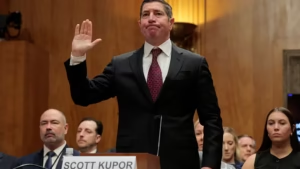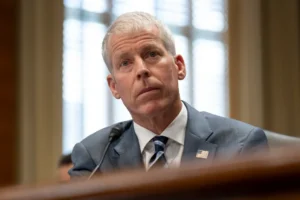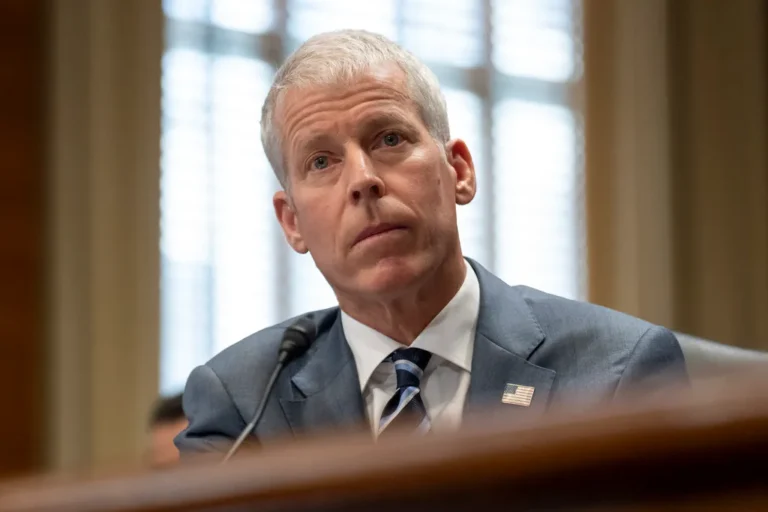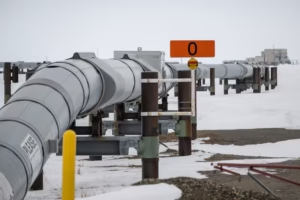Federal Land in Arizona Reassigned for Border Security Mission
US Transfers Arizona Border Land, In a major development aimed at tightening security along the U.S.-Mexico border, the federal government has officially transferred control of more than 280 acres of public land in Arizona to the U.S. Navy. This move is designed to support President Donald Trump’s immigration enforcement strategy and enhance military involvement in border protection.
The transfer, signed off by Interior Secretary Doug Burgum, reallocates about 285 acres in Yuma County to the Department of the Navy. The site is slated to become a National Defense Area — a strategic zone focused on deterring illegal immigration and cross-border criminal activity.
Temporary Control, Lasting Impact
Under the terms of the agreement, the Navy will control the land for three years, during which construction of defense-related infrastructure will commence. The area is located in a desert region long known as a hotspot for unauthorized border crossings and smuggling activity.
Officials emphasized that this jurisdictional change is temporary but essential. “We are closing critical security gaps and defending both our national sovereignty and natural environment,” Burgum stated.
Justified by National Security
Citing the 1976 Federal Land Policy and Management Act, Burgum invoked emergency powers to withdraw the land from its federally protected status. The move mirrors past policy decisions from the early 1900s, when President Theodore Roosevelt first placed the land in public trust to address cross-border threats.
This reclassification reflects a growing push by the Trump administration to repurpose federal lands for border enforcement. The administration has previously seized land for barrier construction and surveillance infrastructure.
Military Role at the Border Expands
The reassignment of public land to military hands is part of a broader defense strategy. In recent months, the Pentagon has begun establishing militarized buffer zones along the border. These zones will allow military personnel to work alongside Customs and Border Protection (CBP) agents to intercept illegal crossings.
Supporters argue that military presence deters human trafficking, drug smuggling, and unauthorized entry, especially in remote sectors that are difficult for CBP to monitor alone.
Environmental and Cultural Safeguards Cited
Interestingly, federal officials framed the decision as beneficial not only to national security but also to the environment. They noted that unchecked illegal immigration has damaged fragile desert ecosystems and cultural landmarks. The Department of the Interior argues that restoring law and order helps prevent further destruction.
By controlling the flow of migrants and smugglers through protected areas, the administration claims to protect both natural resources and Native American heritage sites.
A Strategic Asset for Southern Border Control
With this land transfer, the Trump administration is signaling a long-term commitment to reinforce the southern border using all available federal tools. The Navy’s involvement underscores a new level of coordination between civilian agencies and the military in enforcing immigration policy.
Approximately 33% of the land along the southern border is federally owned, giving Washington significant power to make sweeping changes without needing private land seizures. However, large portions of the border also intersect with tribal lands, which remain largely outside federal jurisdiction.

Local and National Implications
The new National Defense Area in Yuma County could become a model for future land transfers under Trump’s national security agenda. As illegal border activity continues to rise, the administration sees value in securing public lands as forward operating zones.
Opponents have raised concerns over potential overreach and military involvement in domestic policy. But supporters argue the Constitution empowers the federal government to protect its borders by any legal means.
Conclusion: Strengthening the Border, Protecting the Land
The Arizona land transfer marks a significant milestone in U.S. immigration enforcement. With the Navy now playing a more active role, the Trump administration is putting muscle behind its promise to secure the border. Whether for national sovereignty, law enforcement, or environmental preservation, the federal government is making it clear that public lands can serve a higher purpose: defending America.
For more latest news checkout our website: usnewsinsight











